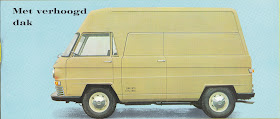















From the moment that first DKW Schnellaster went on sale in 1949, Auto-Union was struggling with production. Auto-Union's Ingolstadt plant was only able to manufacture the 700cc twin-cylinder engine and chassis in house. All other components, including all body panels and sheet metal were manufactured by other companies and shipped to Ingolstadt where the final assembly took place. The first 500 Schnellasters were assembled in the open air courtyard. After clearing a storage hall, assembly was moved indoors. By necessity, Auto-Union began looking for a commercial factory site, which would ultimately be established in Dusseldorf. https://dkwautounionproject.blogspot.com/2017/07/dkw-f89p-factory-photos.html
Although the Schnellaster production line was relocated to Dusseldorf, the factory was principally focused on the DKW F89P sedan, upon which the entire future of the company was pinned. What Auto-Union needed was a separate factory dedicated to Schnellaster production. They would find it in the Industrias del Motor S.A plant in Vitoria, Spain. IMOSA was established as a joint venture between Auto-Union in Ingolstadt and two Spanish businessmen. Initially the freshly constructed plant assembled Schnellasters from German-made components, but after 1950 Auto-Union transferred to IMOSA all the dies and machine tools to manufacture all components in-house. The various engine changes introduced by Auto-Union were all replicated at IMOSA, both German and Spanish plants manufacturing the same vehicle.
After Mercedes-Benz took control of Auto-Union in 1958, a decision was made to liquidate the Dusseldorf plant and transfer production of the DKW and Auto-Union sedan cars to Ingolstadt, which was being modernized for production of the new DKW Junior. Mercedes-Benz decided to stop all German production of the DKW Schnellaster and assigned IMOSA exclusive production of the Schnellaster, which they would export to all Auto-Union markets. From 1960, IMOSA began restyling the Schnellaster with a new front hood.
In 1964, IMOSA engaged Carosserie Fissore (who also styled the later Brazilian DKW-Vemag models) to modernize the Schnellaster. The result was the DKW F1000L. Styling was modern and distinctive. The F1000L was originally powered by the three-cylinder 1000cc Auto-Union engine, but soon a Mercedes-Benz diesel engine option was made available. When Mercedes-Benz sold Auto-Union to Volkswagen, Mercedes-Benz retained the relationship with IMOSA and the DKW F1000L became the MB 1000L and the progenitor of Mercedes-Benz' line of small commercial vans.
Development of the DKW Schnellaster: https://dkwautounionproject.blogspot.com/2020/07/the-development-of-dkw-schnellaster.html
1966 Dutch brochure: https://dkwautounionproject.blogspot.com/2024/07/1966-dkw-f1000l-dutch.html
Some websites (not as serious as yours, it is true), such as:
ReplyDeletehttp://www.patrimonioindustrialvasco.com/actividades/imosa-industrias-del-motor-s-a-de-vitoria-gasteiz-y-la-furgoneta-f-1000-dkw/
https://advancedfleetmanagementconsulting.com/blog/2022/09/17/auto-union-dkw-f-1000-l/
publish that the design of the DKW F1000 comes from Carrozeria Fissore. Considering that this coachbuilder made DKW designs for other non-German markets such as Brazil and Argentina, could it be a real possibility that the author of the F1000 was Fissore and not Pininfarina?
In that case, I am curious to know the motivations and circumstances of this agreement that only materialized for products outside Germany. Do you have more information on the terms of this (strange to me) partnership?
On the other hand, I would like to take this opportunity to congratulate you for the great quality content you offer in your blog. I encourage you to continue giving so many hours of joy to those of us who read it regularly.
Greetings from Spain.
Sorry, you are correct Jose-Manuel. Fissore was the stylist. It was my error when writing. Fixed now. I believe the joint venture was established solely for to lack of capacity in German industry at the time, as all companies were still recovering from the war damage. The arrangement must have continued because it was successful and did not interfere with DKWs own German market. Despite the company's success, the company was not well organised and began a slow decline from 1958.
Delete